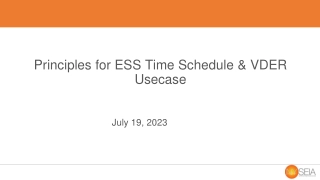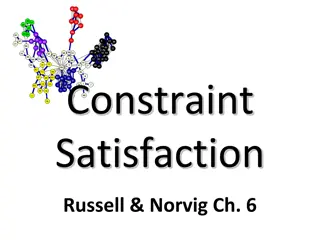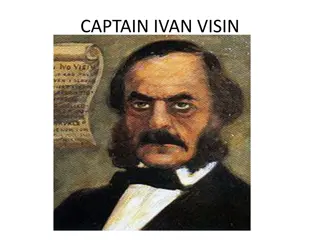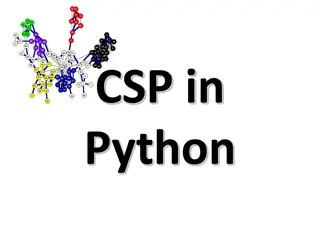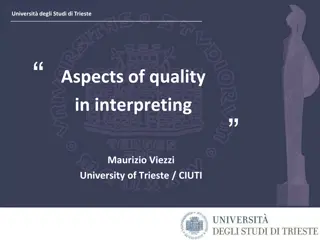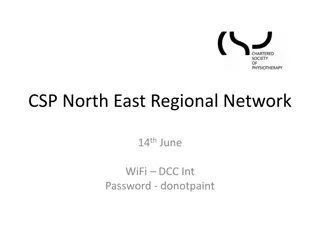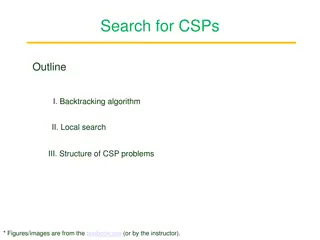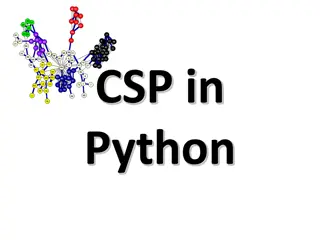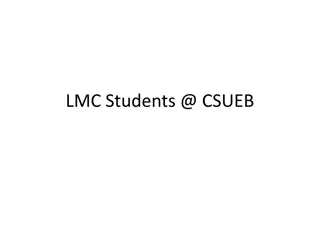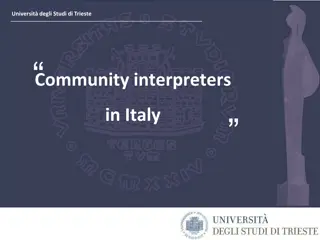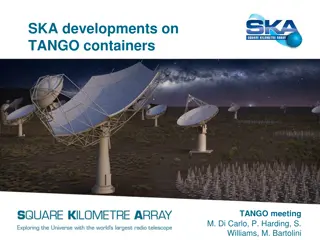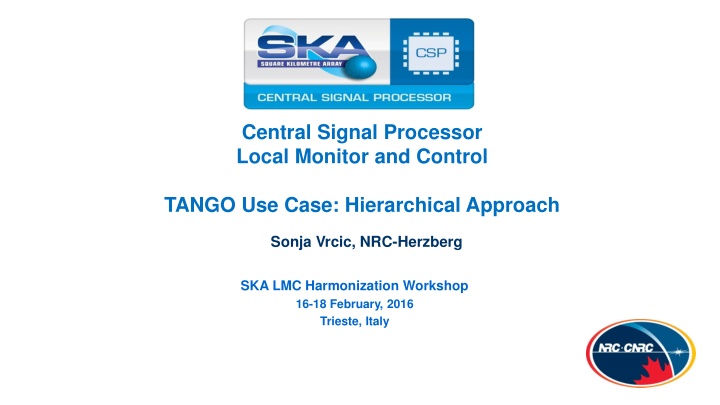
Hierarchical Approach to Signal Processing and Control in SKA Elements
Explore the hierarchical architecture of the Central Signal Processor Local Monitor and Control system in SKA elements, highlighting the organization, communication, and coordination of sub-elements for effective monitoring and control. Learn about the responsibilities, communication protocols, and best practices for implementing the CSP as a Tango facility.
Download Presentation

Please find below an Image/Link to download the presentation.
The content on the website is provided AS IS for your information and personal use only. It may not be sold, licensed, or shared on other websites without obtaining consent from the author. If you encounter any issues during the download, it is possible that the publisher has removed the file from their server.
You are allowed to download the files provided on this website for personal or commercial use, subject to the condition that they are used lawfully. All files are the property of their respective owners.
The content on the website is provided AS IS for your information and personal use only. It may not be sold, licensed, or shared on other websites without obtaining consent from the author.
E N D
Presentation Transcript
Central Signal Processor Local Monitor and Control TANGO Use Case: Hierarchical Approach Sonja Vrcic, NRC-Herzberg SKA LMC Harmonization Workshop 16-18 February, 2016 Trieste, Italy SKA TANGO Workshop, Use Case: CSP LMC Hierarchy Of Devices 1
Introduction Each of the SKA Elements is a complex, functionality rich sub-system, and each has been sub-divided in sub-elements which themselves are complex systems and consist of many components. Each Element is responsible for monitoring and control of its components. This use case uses CSP as an example of a hierarchical architecture. SKA TANGO Workshop, Use Case: CSP LMC Hierarchy Of Devices 2
CSP Sub-elements Signal processing sub-elements (CBF, PSS and PST) receive configuration and commands from LMC. TM In most cases originator of configuration and commands is TM, but data is received via LMC. Local Monitor and Control (LMC) CBF, PSS and PST each have a single point of communication with LMC. Pulsar Search (PSS) Correlator and Beamformer (CBF) DISH/ MeerKAT SDP From the point of view of monitor and control, CSP sub-elements CBF, PSS and PST are loosely coupled ; they exchange very little information. Pulsar Timing (PST) CSP SKA TANGO Workshop, Use Case: CSP LMC Hierarchy Of Devices 3
Hierarchical approach to monitor and control. Entity that reports on behalf of a sub-system or on its own behalf: Is responsible for internal monitoring, control and co-ordination of its components. Maintains its own status and is able to report it. Reports self-description to an entity higher up in the hierarchy. Each CSP sub-element: implements a single interface with CSP_Mid.LMC. is responsible for internal monitor, control and co-ordination of its components. Each CSP sub-element must be able to: Translate commands received from LMC into commands for its components. Co-ordinate operation of components. Report overall sub-element status. And much more CSP_Mid.LMC CSP_Mid.PSSMaster CSP_Mid.CBF Master CSP_Mid.PST Master X-Part Server F-part Server BF-Part Server SKA TANGO Workshop, Use Case: CSP LMC Hierarchy Of Devices 4
CSP_MID Tango Devices TANGO Devices implemented by the same software package (i.e. the same s/w package is reporting on behalf of these devices. Number in the parenthesis indicates the number of instances. SKA TANGO Workshop, Use Case: CSP LMC Hierarchy Of Devices 5
TANGO Facility best practices - for discussion Should CSP be implemented as a single Tango Facility? Or is it more appropriate and practical to implement each CSP sub-element (including LMC) as a distinct Tango facility? What should we take in consideration when making this decision? Complexity of the individual devices Number of devices (types, instances) Hierarchy. I.e. how deep is the hierarchy (number of levels) Encapsulation Organizational considerations: o Each CSP sub-element will be developed independently by a different group, using different technology and code base. Each sub-element will be integrated and tested independently, before integration at the CSP integration and test facility. o For each release, the sub-element acceptance test and sell-off will be performed for each sub- element independently, using test tools (input vector generators, emulators, simulators). CSP AIV group will be responsible for integration of the sub-elements and CSP acceptance test and sell-off to the SKA AIV Group. Other SKA TANGO Workshop, Use Case: CSP LMC Hierarchy Of Devices 6
Questions? Thank you ! SKA TANGO Workshop, Use Case: CSP LMC Hierarchy Of Devices 7

